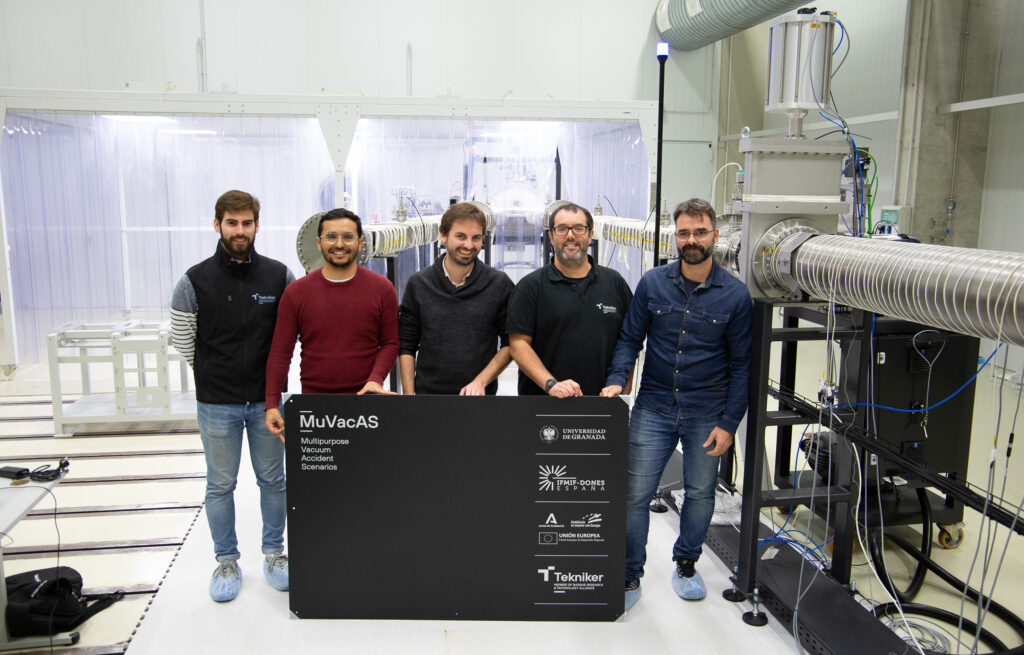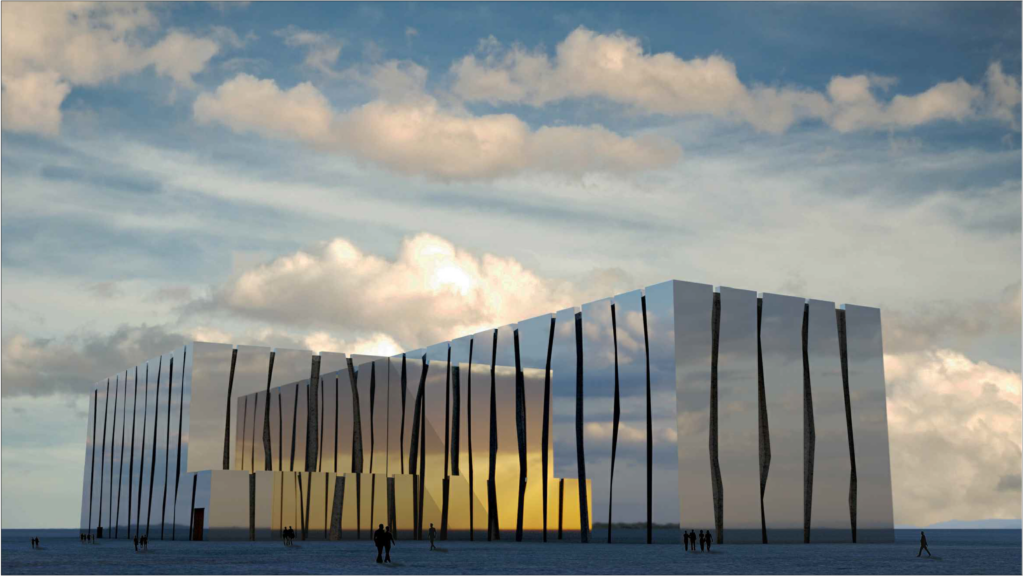Faces lit up at the facility of the future Demo Oriented NEutron Source (DONES) when Claudio Torregrosa and Anderson Sabogal received a prototype of the last 30 metres of the particle accelerator’s vacuum chamber shortly before Christmas 2023. Named MuVacAS, or Multipurpose Vacuum Accident Scenarios, it might not seem exciting, but it plays a critical role in testing the reliability of the design of critical elements of this new particle accelerator and unique facility: the International Fusion Materials Irradiation Facility – Demo Oriented Neutron Source (IFMIF-DONES).

No equivalence on Earth
IFMIF-DONES will house a source of neutrons with energy levels similar to those anticipated in future fusion reactors. Materials used in reactors must endure conditions unmatched on Earth. Spain has embraced the challenge of hosting this pivotal test facility for fusion reactor materials, constructing IFMIF-DONES in Escúzar, about 18 kilometres southwest of Granada. With the arrival of MuVacAS, a first piece of the puzzle is in place.

Knocking atoms out of place
Harnessing the Sun’s energy on Earth presents numerous challenges, particularly in materials research. The ‘real’ fusion fuel, a Deuterium-Tritium mixture, generates a vast number of energetic neutrons. These neutrons can damage reactor components by displacing atoms within their materials. A future fusion reactor will experience long pulses with numerous fusion reactions, each generating a high-energy neutron. Consequently, the impact on surrounding materials will be significantly greater than anything previously seen in fusion research machines.
It is like testing a new motorway to get the official licence to open it. To date, the road has only been tested with a compact car driving on it every half an hour. However, the long-pulse operations of future fusion power plants will resemble a constant flow of heavy transport trucks on the highway’s surface. What will the surface material look like after twenty years of such intense traffic?
Long distance travel to meet a curtain
First, an injector ionizes deuteron gas, an isotope of hydrogen. These deuterons then travel through a 100-meter accelerator. As they speed through the tunnel, they gain energy and, upon exiting, collide with a curtain of liquid lithium, generating a multitude of high-energy neutrons. These are the neutrons that fusion scientists aim to study because they significantly affect the material inside future fusion reactors. While IFMIF-DONES is extensive, the material samples tested are merely the size of your fingertips.
(Watch an excellent explanatory video here.)
Accelerating the accelerator
A major challenge involves rapidly assessing the durability of materials under the intense conditions expected within future fusion reactors over decades. “We want to reproduce in experiments lasting months what will happen over the lifetime of future fusion reactors,” explains José Aguilar from the DONES Programme Office. This strategy enables a quicker transition from experimental phases to practical applications in fusion materials technology.
Strong support for the Spanish endeavour
The results are eagerly anticipated and vital, as the recently decommissioned Joint European Torus (JET) in the UK was the only facility capable of generating deuterium-tritium fusion reactions, albeit briefly, for up to five to six seconds at a time. ITER is expected to be the next facility capable of using a deuterium-tritium fuel mix.
Preparing the first fusion power plant
Consequently, EUROfusion has made the IFMIF-DONES material testing facility one of the pillars of its programme. It is scheduled to commence in the mid-2030s alongside ITER, which is currently being constructed in France. The outcomes from ITER, combined with the materials tested in IFMIF-DONES, will contribute to the development of the DEMO demonstration power plant and future fusion reactors.
Encouragement from Japan

Encouraged by the recent success of the Japanese tokamak JT-60SA, the IFMIF-DONES team remains optimistic about future collaborations. Ángel Ibarra, Director of IFMIF-DONES España, was a witness to the first plasma in December 2023: “JT-60SA and IFMIF-DONES, along with other large scientific fusion facilities, will share knowledge in the development of essential fusion technologies. We will provide information about materials”, he adds.
A unified endeavour
Fusion research, a cornerstone in the sustainable energy future, requires deep, sustained collaboration. The IFMIF-DONES project, a European initiative, exemplifies this collaborative spirit. It is uniquely focused on understanding material behaviour under extreme fusion-relevant conditions. This facility is not just a testament to Europe’s leadership in fusion research but also a vital piece in the global effort of harnessing fusion energy.
Further reading: International materials facility IFMIF-DONES starts construction phase https://euro-fusion.org/related/ifmif-dones/international-materials-facility-ifmif-dones-starts-construction-phase/
